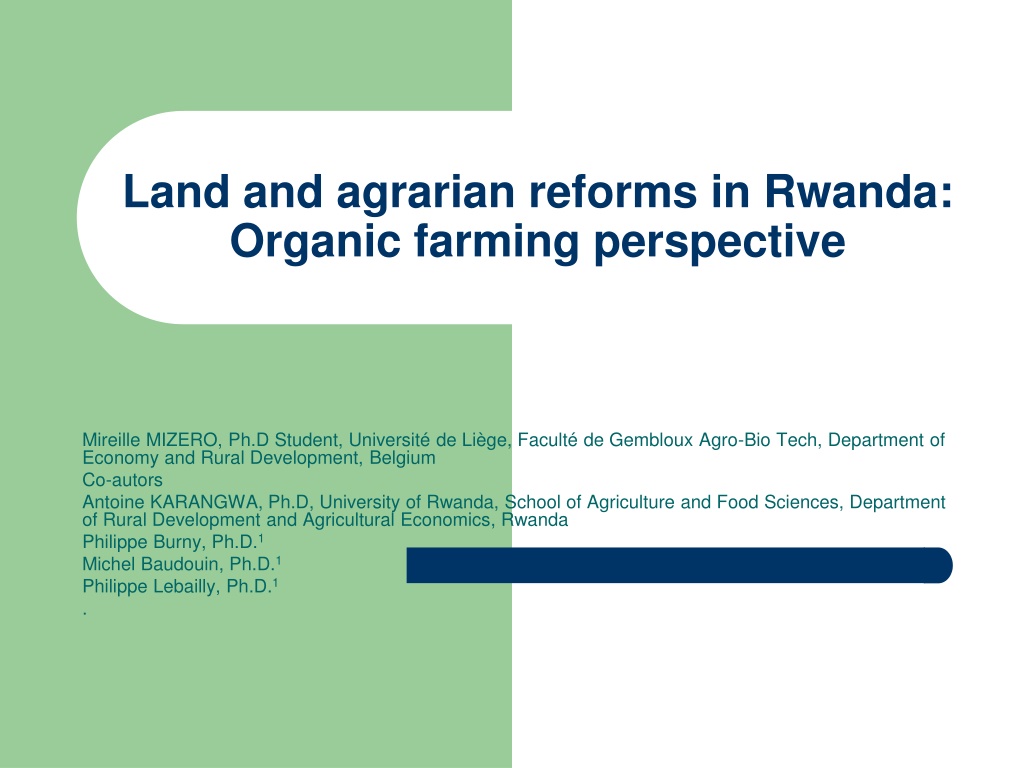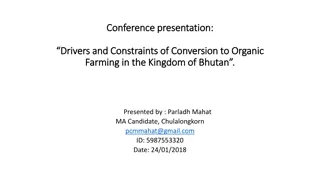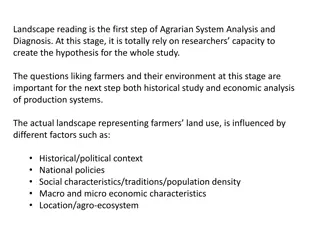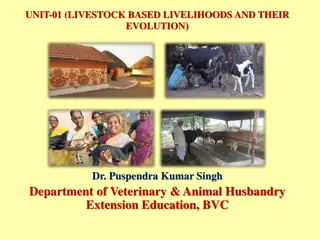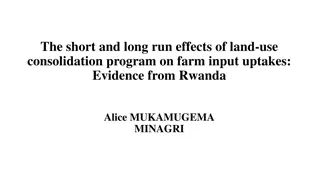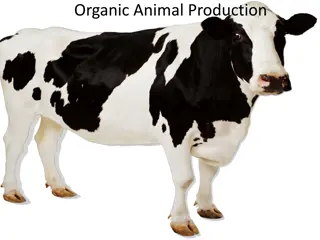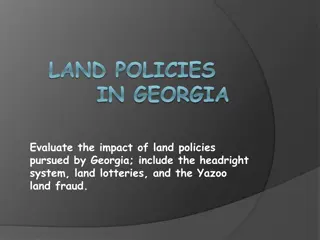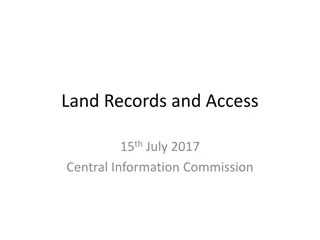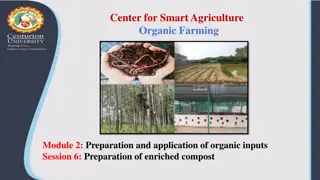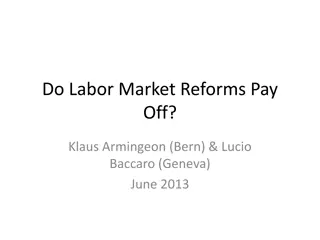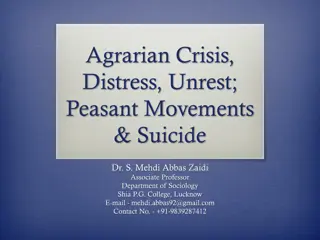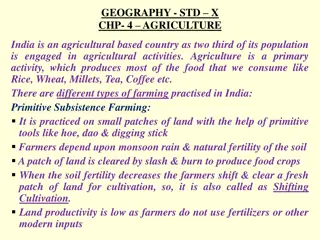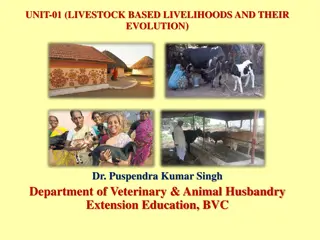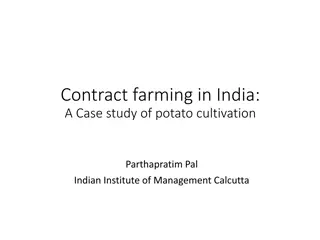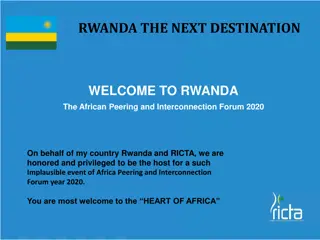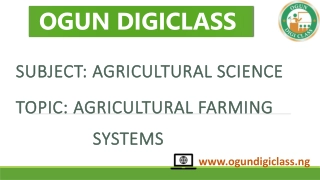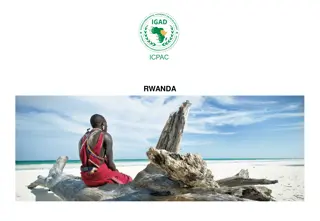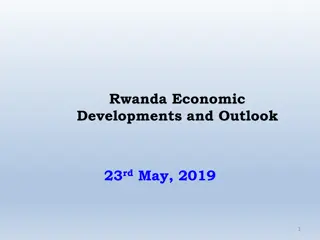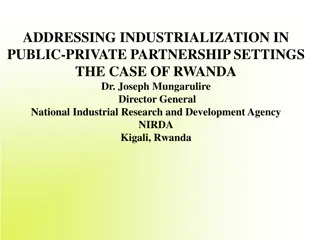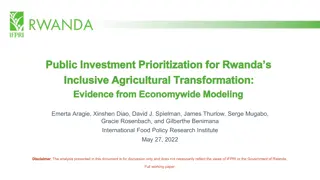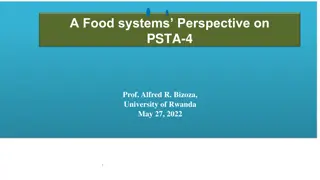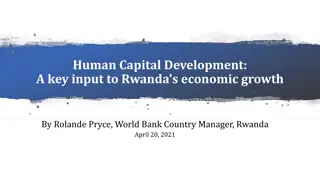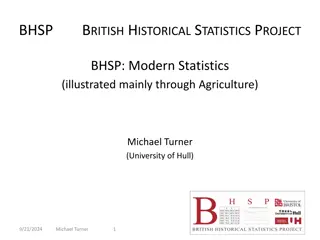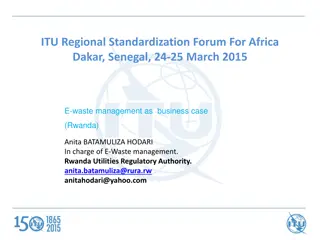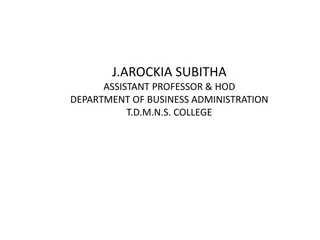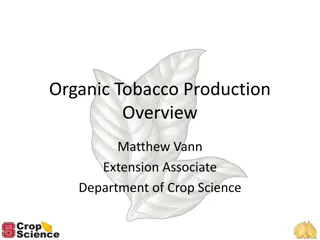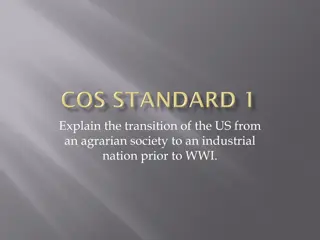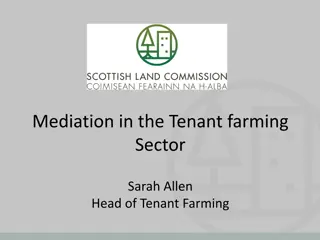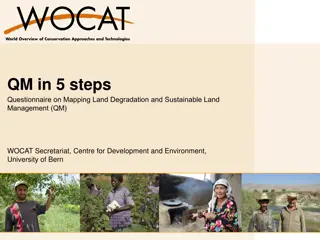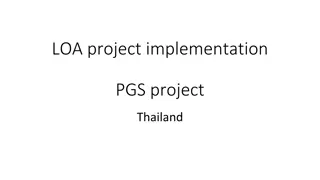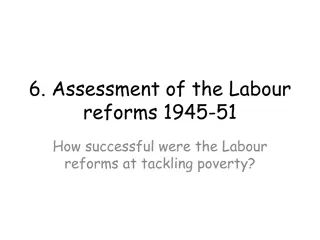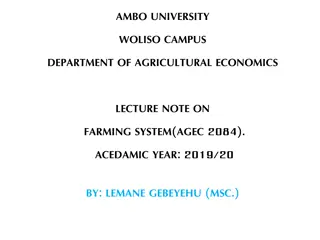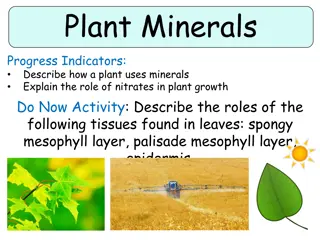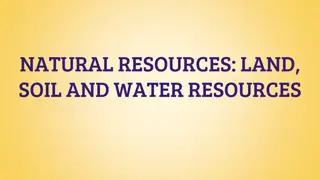Land and Agrarian Reforms in Rwanda: Organic Farming Perspective
Land reform policies in Rwanda have been crucial for optimal land resource utilization, conflict resolution, and equity promotion. Since 2004, there have been significant changes focusing on systematic land registration, asset transaction facilitation, and efficiency through specialization. Organic farming is highlighted as a means to increase land value by improving soil quality and long-term sustainability, emphasizing investments in agriculture, livestock, and agroforestry. Organic agriculture operates without harmful chemicals, promoting environmental sustainability and productivity.
Uploaded on Sep 27, 2024 | 0 Views
Download Presentation

Please find below an Image/Link to download the presentation.
The content on the website is provided AS IS for your information and personal use only. It may not be sold, licensed, or shared on other websites without obtaining consent from the author. Download presentation by click this link. If you encounter any issues during the download, it is possible that the publisher has removed the file from their server.
E N D
Presentation Transcript
Land and agrarian reforms in Rwanda: Organic farming perspective Mireille MIZERO, Ph.D Student, Universit de Li ge, Facult de Gembloux Agro-Bio Tech, Department of Economy and Rural Development, Belgium Co-autors Antoine KARANGWA, Ph.D, University of Rwanda, School of Agriculture and Food Sciences, Department of Rural Development and Agricultural Economics, Rwanda Philippe Burny, Ph.D.1 Michel Baudouin, Ph.D.1 Philippe Lebailly, Ph.D.1 .
Presentation What Where Why How
Land reform land reform policy is critical to provide a framework for optimal use of available and predictable land resources It required a well conceived legal and institutional changes, Overcome land-related conflict and inequity, Avoid discrimination in land access and ensure equity in inheritance as well as transparency in land transaction.
Land and agrarian reform implementation in Rwanda 2004 until now Land policy and land laws change Consists in systematic registration and regularization of land use right Facilitate land and incorporated assets transaction Garantee land use efficiency by regional specialisation and land consolidation Promoting collective or individual agribusiness
Land reform for increasing land value Organic material improve structure and texture of the soil for long term Need garantee that the ownership or usefruct are insured for long time Anhence investment in agriculture, livestock and agroforestry Adding value based on its potential fertility
What is organic agriculture Organic farming operates without pesticides, herbicides and inorganic fertilizers, and usually with a more diverse crop rotation. (Bengstson et al., 2005) use of organic fertilizers, manure and ley is the recognized as incentive in organic farming Some pesticides are allowed when they are not selective.
Organic farming is not Unproductive farming Subsistance agriculture Extensive agriculture Unprofitable business Necessarily environmentally friendly farming
Research question and objective Can the agrarian system in Rwanda set up entirely on organic or inorganic fertilizers exclusively? Is the rotation of pyrethrum and potatoes a good farming system to limit excessive use of mineral fertilizers and pesticides?
Objective To analyse how organic agriculture can coexist with conventional agriculture and allow agriculture operators or investors to benefit of the market liberalisation
Methodology Study area Northern province, Kinigi sector Virunga mountains Extension (Nyabihu, Musanze, Burera and Rubavu districts)>1500 m to 3000 altitude, 20 to 22 C Literature review, Unstructured survey and intervews Observation during the field work in august
Over 10,000 organized in seven (7) cooperatives. NAEB (2013) approximately 15 % of the world market share. NAEB (2013)
Types of fertilizers used in Rwanda agrarian system Marginal usage of chemical fertizers
Pirethrum vs others export crops Traditional export commodities Coffee 16,989,730 Year 2012 Volume in kg Total revenue in $USD Comparative value/kg in $USD Ratio Pyrethrum/Other agriculture export products Horticulture Tea 22,453,391 Pyrethrum Flower 25,785 Vegetables Fruit 171 28,699,579 4,040,251 60,886,260 3.58 65,717,926 7,517,900 291.56 448 9,542,400 1,138,719 0.33 2.62 0.28 2.93 81.36 1.00 111.29 876.89 1,034.48 99.62 Source : Author from statistics reported by NAEB (National Agricultural Export Development Board, 2012)
Organic insecticides SOPYRWA AGROPY Ltd ECOCERT under European Union regulations EC No. 834/2007 & 889/2008 for Pyrethrum 5EW.
PPFS+Agroforestry= profitable & social farming system Increasing income Market oriented production & food supply Social &Human capital Land &Credit access Networking of farmers between and within cooperative National level Regional level International level FECOPPORWA 9,796 members RDC, Burundi, Uganda Agriterra AgriProFocus, NEDATO
Positives aspects of land access regulation Secure tenure Access to credit both informal and formal Organic farming investiment for long time
Paysannat land management and use 1936 Congo 1945 Burundi 1953 Rwanda 2ha/nuclear family EEC& Belgium Certificate of use&habitation Cooperative
Challenges for pyrethrum The crop production is still low because the inputs are also still low. Lack of appropriate drying materials. Lack of adequate crop husbandry among farmers.
Challenge for pyrethrum Production has continued to drop due to management problems. It is difficult to deliver the products from the farms to the factory. Poor infrastructures more especially in rural areas. Lack of information about international market for the small farmers
Thank you very much for your attention
